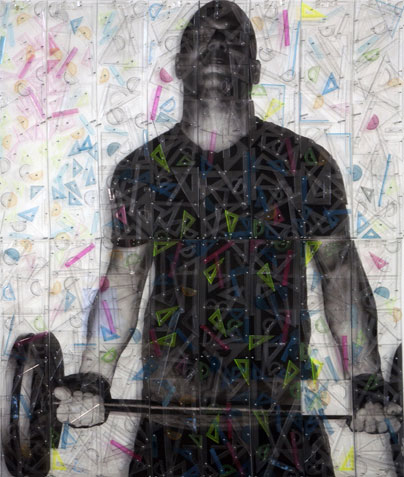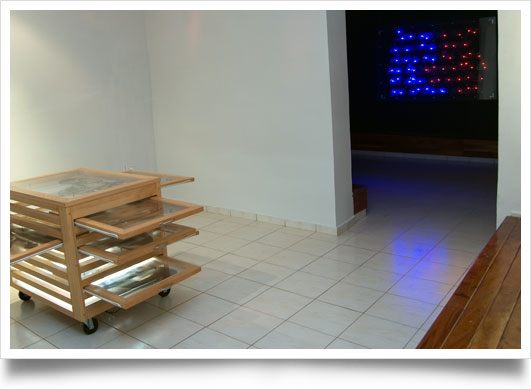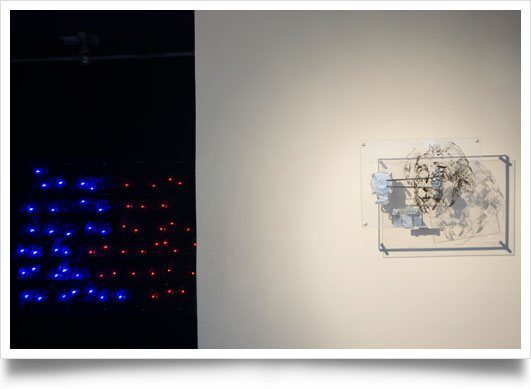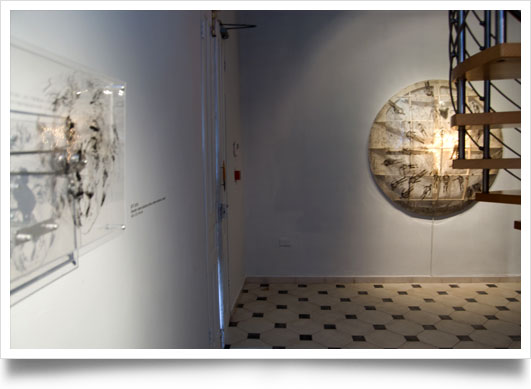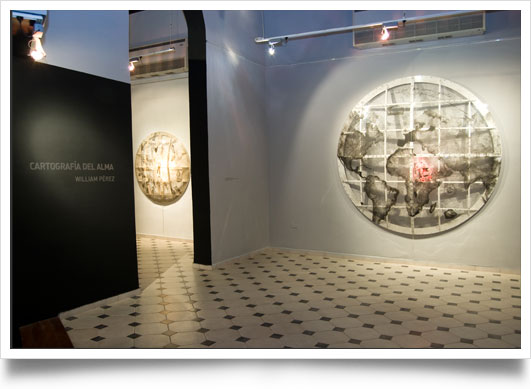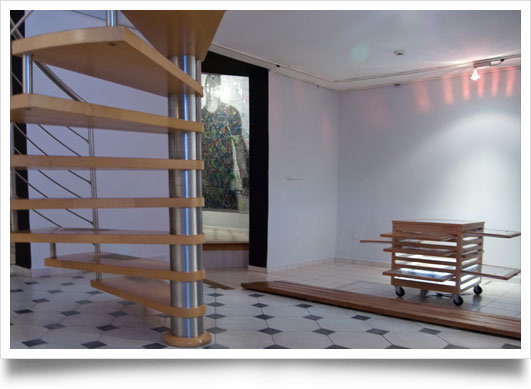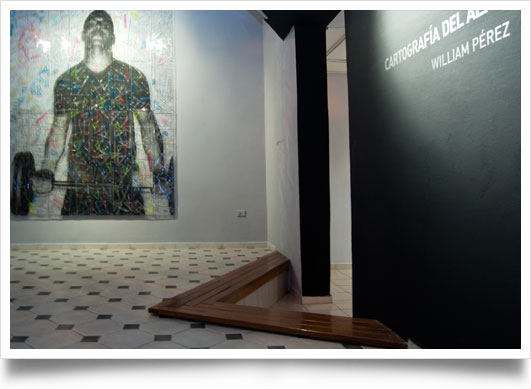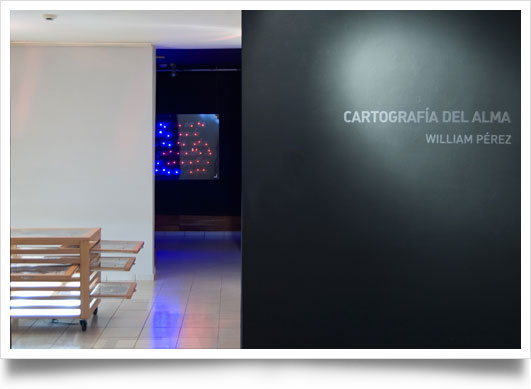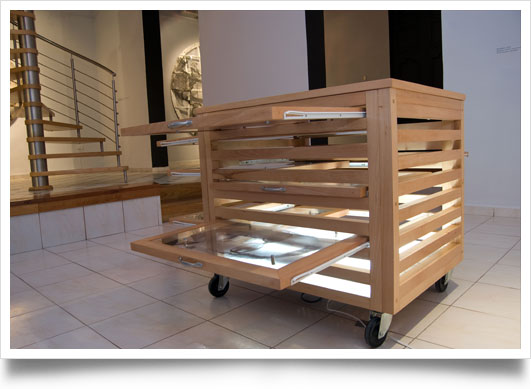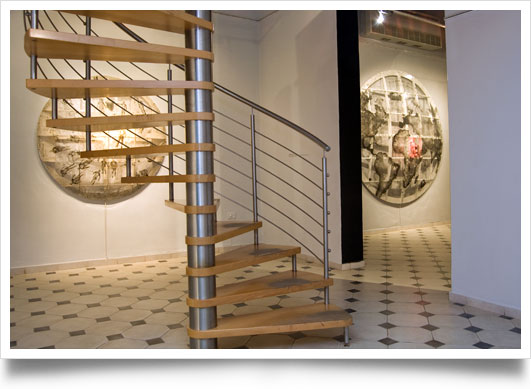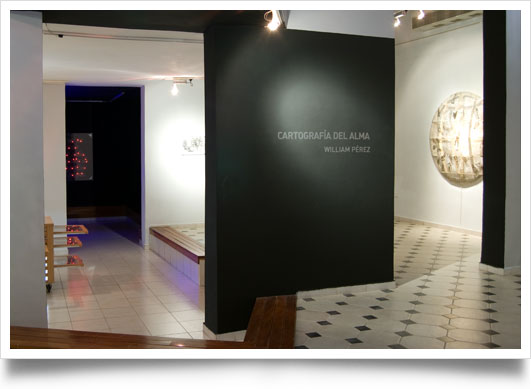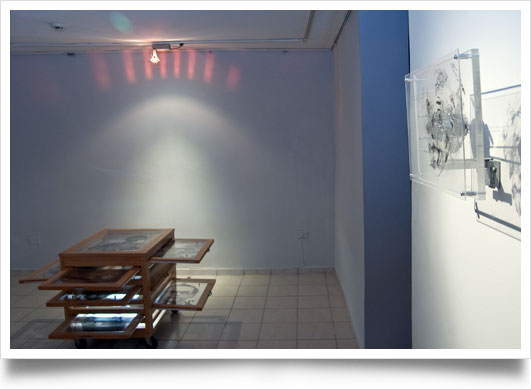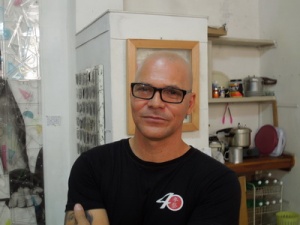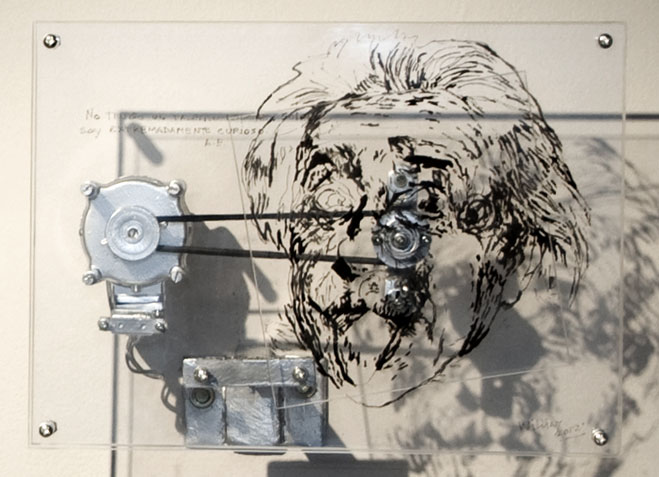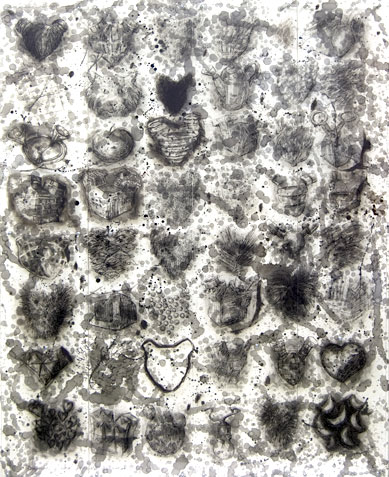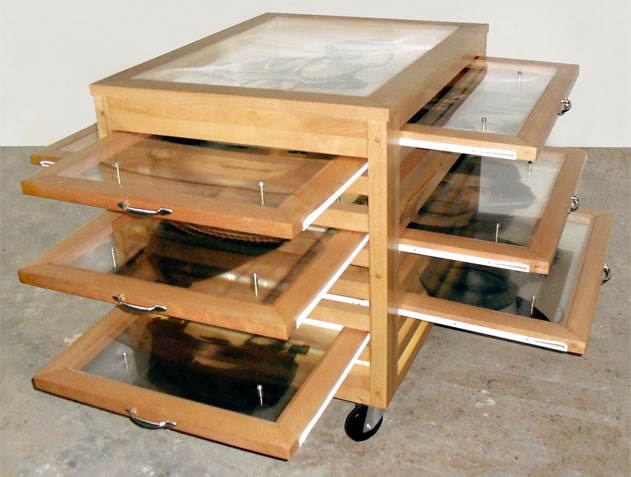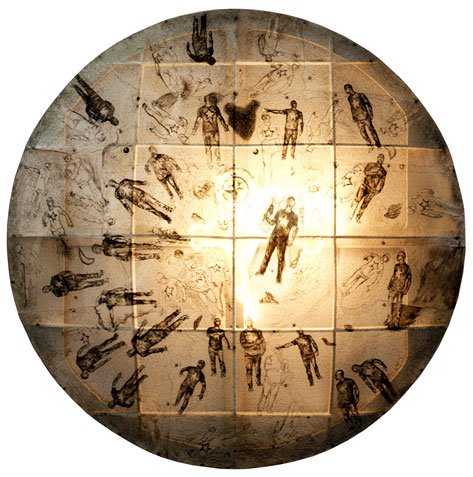Cartography of the Soul
William Pérez's Geographies
What makes a man go in search of the different, of the new? What makes him want something beyond, try otherwise, attempt the unknown? That would be a good question for sculptor William Pérez Fernández (1965), a creator who is well-positioned in the renewal of Cuban art of the early 1980’s in his native Cienfuegos. That city hosted with great force one of the important centers for the change of physiognomy of our plastic arts. And although they may not be sufficiently mentioned, advanced groups like Grupo Punto and its coordinates Arte Sur, to which William contributed his creative impulse, will remain forever.
I wish to recall outstanding performances by William for the Cienfuegos Provincial Museum that Havana, forgetful and discourteous, did not see fit to highlight. Particularly the impacting installation Carga subjetiva (Subjective Load) from 1997, which broke into the museum space, creating a disturbing palisade of wood and 8×10 m sawdust sacks, surrounded by a rustic catwalk on high along which the spectator was to climb to a three-meter altitude. This tour, full of uncertainty and precarious balance, ended in a zenithal vision of the museum hall, to discover that a horse was inside the palisade.
And I do not cease to be amazed today, like the first time I saw it, by the overflowing sculptural and sound installation Rinoceronte (Rhinoceros). That extraordinary piece from 2008 belongs to the period of kinetic works by the artist, when his productions were crowded with motors, cables, electric artifacts and television sets, among other apparatuses. Attracted by Dürer’s classic rhinoceros, William, however, noticed Yambo, the specimen at the Havana zoo in the 26th Avenue, the true inspirer of his installation. Of forged, assembled aluminum, the more than 3-meter large Rino has an intelligent sound system inside that is activated by the spectator’s action, producing the sound of incredible trumpets integrated to the animal. To our misfortune, this excellent piece has only been seen at the Cienfuegos Art Center.
It is therefore amazing to see how William has intrepidly left that entire colossal background of metals, woods, sounds, animals and physical immensity, to talk to us from other sculptural and emotional perspectives. And a new geography of the man and sculptor has knocked on our door to make himself known in the here and now of his art and ideas.
That new present geography springs at us from the moment we enter his ample workshop, constructed with such difficulties: they are transparences, lights, delicate sgraffito drawings and photographs printed on vinyl that assault us today. Circular forms resembling planets abound in the still unfinished pieces, indicating perhaps that the artist has arrived at that point in which one glances from a higher level, beyond the simple human stature, to see what may be happening in a topographic and existential surrounding extended to the entire human genre. And he himself, his silhouette and image, come out profusely to meet the new works, in the fashion of an idea of himself that is like a form of thinking about all of us.
Secreter (Writing Desk) is a piece worthy of its linguistic lineage. Digital photographs belonging to all the stages of the artist’s life may be seen printed on vinyl inside a furniture piece halfway between the private desk and the professional drawer file destined to conserve works on paper. When the wooden-framed Plexiglas compartments are opened, a true visual autobiography is discovered while we see photos that go from the showy long-haired boy to the serious sculptor who today wears glasses. And an inner light illuminates the entire file to end, on the surface, with the drawing of a simple turtle, dear toy from his childhood.
The piece En todas partes (Everywhere) is a convex, transparent semi-sphere, also illuminated from inside, that William has drawn by sgraffiting the Plexiglas to later fill in the very fine grooves with color. He imitates the world and many Williams appear in it, in diverse poses, doing we don’t know what, but feeling as if at home anywhere. An overflowing of the sense of living beyond the sacrosanct point in which we were accidentally born seems to attract the sculptor, who feels equally gratified in all parts of this transparent world, full of slight intimate allusions and minimum geographic clues.
In a semi-sphere where a much larger plane chart has been drawn, William is seen sitting in Northern Africa with strange apparatuses on his legs, thus becoming one of his favorite characters: Forrest Gump. The evocation of the much-awarded film by Robert Zemeckis (1994) played by Tom Hanks mixes with his own ideas related with the human will and the essential it is to consider purposes tht mold our lives. Because almost all the pieces in this exhibition tell us of the will, of the purpose, of the dreams that guide us, and of the perseverance to achieve them. And this group of ideas, reflected in texts and images, forms a unit with the materials and the form of working them. The transparence and luminosity of these sculptures show the essential sense of the pieces. In turn, the form of disclosing the entire supporting structure and the connection of the physical components grant that air of clearness and lucidness in accordance with the self-reflexive tone of the exhibition.
In opposition to his father’s recommendation, in the piece Mi padre me dijo siempre que debía tener el corazón de hierro (My Father Always Said I Should Have an Iron Heart) the artist offers a heart full of flowers. And the motto sculpted on the Plexiglass that reads “Dreams do not vanish when someone steals them from me…” speaks prodigally of the importance of the textual component in these sculptures and its link to the ideas that serve as their base. No wonder this sculptor, a graduate from San Alejandro in 1985, started his career at a top moment of conceptual art in the Island.
In six pieces we have what the creator calls cartography of his soul. Which seems to me to be very close to the scrutiny of his own existence, to a moment when man searches himself, feels himself topographically, measures himself, weighs himself up, reviews his life and feels no more and no less than a human being who, from his sculptor’s workshop, can tour the world and move forward toward the unknown.
Corina Matamoros.
Artworks
Everywhere
William Pérez 2012I was only thinking of running
William Pérez 2012The Human Being is the Measure
William Pérez 2012Artists
